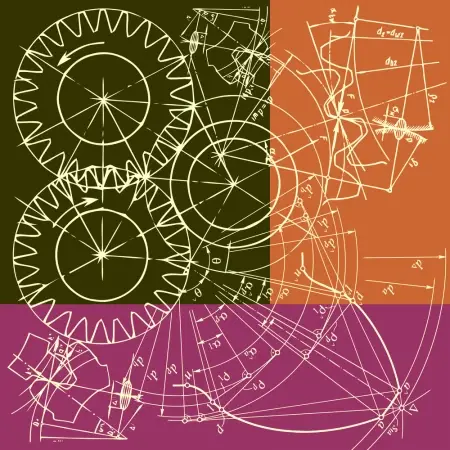
Euclid's postulates are the fundamental pillars of classical geometry and form the basis of what we know as Euclidean geometry.
These postulates, presented more than 2,300 years ago, are a set of statements so simple and obvious that Euclid considered them indisputable truths on which theorems could be built and more complex properties could be demonstrated.
Historical context
Euclid was a Greek mathematician who lived in Alexandria around the 3rd century BC. During his time, Alexandria was an important cultural and intellectual center. Euclid gathered and organized the existing geometric knowledge into his masterpiece, The Elements , a book that has had an immense influence throughout history.
In this book, Euclid not only compiled theorems and proofs, but also established an axiomatic method that became the standard of mathematical rigor for centuries.
Euclid's postulates are the foundation of this axiomatic system. The idea was simple: if we start from a few basic, self-evident truths, we can build a complete mathematical edifice by logical deduction.
The five postulates of Euclid
Euclid's postulates are statements that describe basic relationships on a geometric plane. Let's analyze them one by one.
1. Postulate of the straight line
Given any two points, a straight line can be drawn joining them.
This postulate states that there is only one straight line between two points. This is an intuitive statement, since when looking at two points on a piece of paper or in reality, we can always imagine a line connecting them. This postulate also implies that straight lines are infinite in length.
2. Postulate of the extension of the line
A straight line can be extended indefinitely in either direction.
Here, Euclid tells us that straight lines have no end. We can extend them as far as we like in both directions. Although in practice we work with finite line segments, this postulate is essential for developing more advanced concepts, such as parallelism and perpendicularity.
3. Circle Postulate

Given a point and a distance, a circle can be drawn with that point as the center and the distance as the radius.
This postulate introduces the idea of a circle, a fundamental figure in geometry. The statement seems obvious because it is enough to imagine a compass tracing a circle on a piece of paper. However, it is more than an intuitive description: it states that we can always create a perfect circle if we know its center and radius.
4. Right angles postulate
All right angles are equal to each other.
This statement may seem trivial, but it is of crucial importance. Right angles (those of 90 degrees) are a universal reference in geometry. By declaring that all right angles are equal, Euclid provides us with a standard by which we can compare and measure other angles.
5. Parallel Postulate
If a straight line that cuts two others forms interior angles on the same side whose sum is less than two right angles, then those two lines, extended indefinitely, meet on that side.
This is the most complex and controversial of the five postulates. In essence, it describes the behavior of parallel lines: if two lines do not meet, the angles formed with a third line will have specific properties. For centuries, mathematicians tried to prove this postulate from the other four, without success. Eventually, this search led to the development of non-Euclidean geometries.
Importance of postulates
 Euclid's postulates are not only important for what they say, but also for the approach they represent. Before Euclid, many mathematical ideas were presented in a haphazard manner and without a clear basis. In formulating these postulates, Euclid established a systematic model that ensured that each theorem was built on previous statements, guaranteeing consistency and rigor.
Euclid's postulates are not only important for what they say, but also for the approach they represent. Before Euclid, many mathematical ideas were presented in a haphazard manner and without a clear basis. In formulating these postulates, Euclid established a systematic model that ensured that each theorem was built on previous statements, guaranteeing consistency and rigor.
The axiomatic methodology that Euclid introduced influenced areas beyond geometry. In philosophy, for example, it inspired thinkers such as Aristotle and Descartes to organize their ideas in a similar way. In mathematics, this approach laid the groundwork for the development of modern theories such as calculus and set theory.
Non-Euclidean Geometries
The fifth postulate, also known as the parallel postulate, was the source of much debate. Many mathematicians thought that this postulate was less intuitive than the others and tried to deduce it from the first four. However, their attempts led to a surprising discovery: it was possible to develop completely different geometric systems by changing the fifth postulate.
This gave rise to non-Euclidean geometries such as hyperbolic geometry and elliptic geometry. In hyperbolic geometry, for example, it is assumed that infinitely many parallel lines pass through a given point on a line. In elliptic geometry, there are no parallel lines. These variations have applications in the theory of relativity and in understanding the structure of the universe.